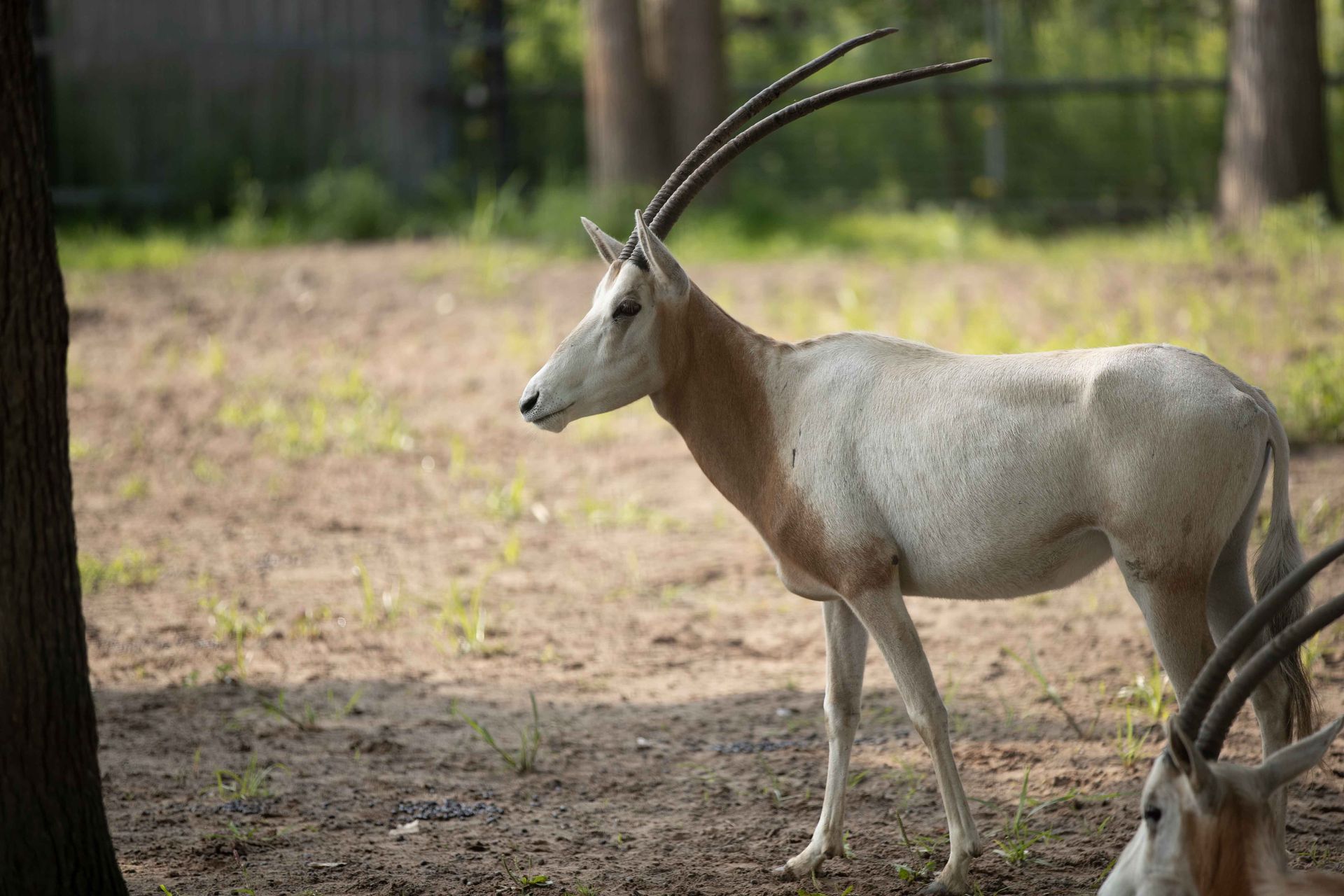Scimitar-horned Oryx
The scimitar-horned oryx is a large white and brown antelope species that are highly adapted to living in arid desert environments. Both male and female scimitar oryx have long, sharp-tipped and curved backwards horns that can reach up to several feet in length. Oryx travel in large herds ranging from 2 to 40 individuals, led by an alpha bull.
Scimitar-horned oryx are herbivores and feed mainly on grasses, herbs, roots, buds and if water is scare fruits and vegetables. Due to the nomadic behavior of oryx, they will often travel many miles in search of new green grass after substantial rainfall.
Once wide spread across most of northern Africa, scimitar oryx are considered to be extinct in the wild. The last evidence of a wild oryx was a photograph taken in the 1980’s in Niger. Through conservation breeding programs the species has been released into four protected areas in both Tunisia and Senegal as part of a long-term reintroduction program.
Little is known about the mating system of scimitar-horned oryx. The breeding season usually takes place when environmental conditions are favorable, but is typically during the fall months. Males will court females by means of a “mating circle”. After a gestation period of 8-8.5 months a female will give birth to a single calf weighing approximately 22 pounds.
Scimitar-horned oryx are herbivores and feed mainly on grasses, herbs, roots, buds and if water is scare fruits and vegetables. Due to the nomadic behavior of oryx, they will often travel many miles in search of new green grass after substantial rainfall.
Once wide spread across most of northern Africa, scimitar oryx are considered to be extinct in the wild. The last evidence of a wild oryx was a photograph taken in the 1980’s in Niger. Through conservation breeding programs the species has been released into four protected areas in both Tunisia and Senegal as part of a long-term reintroduction program.
Little is known about the mating system of scimitar-horned oryx. The breeding season usually takes place when environmental conditions are favorable, but is typically during the fall months. Males will court females by means of a “mating circle”. After a gestation period of 8-8.5 months a female will give birth to a single calf weighing approximately 22 pounds.
Fun Facts
The average life span for scimitar-horned oryx under managed care is 28 years, but it is unknown the lifespan of the species in the wild.

scientific classification
Kingdom
Animalia
Phylum
Chordata
Class
Mammalia
Order
Artiodactyla
Family
Bovidae
Genus
Oryx
Species
Oryx dommah
did you know?
Scimitar-horned oryx can tolerate an internal body temperature of 47 ⁰C, which allows them to conserve water and thrive in the desert.
Scimitar-horned oryx have capillaries near their nasal passage that help cool blood that is flowing to the brain
They have extra wide hooves that help them to walk over sand without sinking



